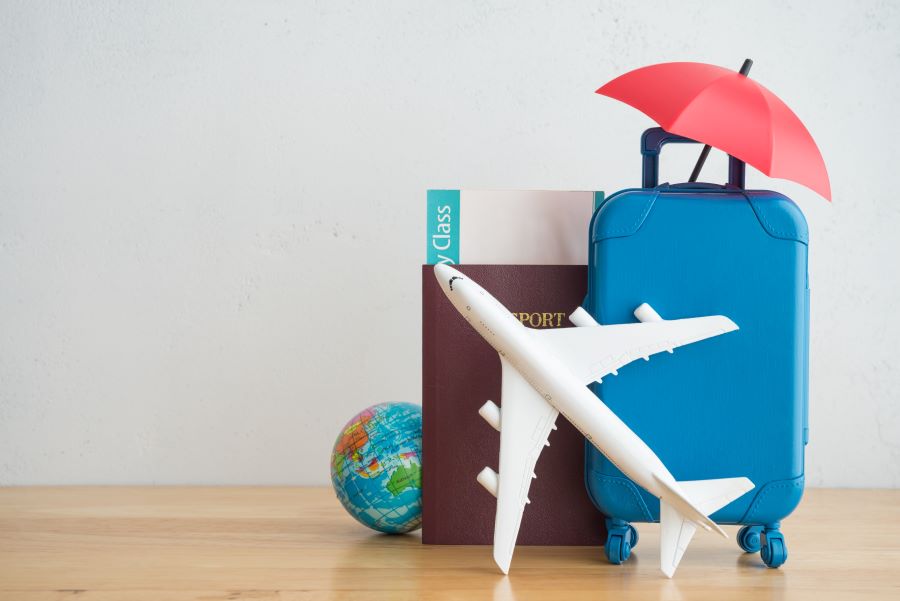Travel Insurance Explained: Your Complete Protection Guide
Explore how travel insurance shields you from costly surprises while on the road. This guide breaks down policy types, ideal purchase timing, common exclusions, and how to file claims — plus a comparison of leading providers and coverage options to help you pick the right plan.

Types of travel insurance policies
Travel insurance comes in several forms to match different itineraries and traveler needs. Single-trip plans cover a specific journey from departure to return, making them ideal for one-off vacations. Annual or multi-trip policies protect multiple short trips taken within a 12-month window and can be more economical for frequent travelers.
There are policies tailored to particular groups: business travel plans focus on trip interruptions and work-related loss, student policies are designed for study-abroad scenarios, and adventure or extreme-sports add-ons extend coverage for activities like scuba diving or climbing. Family and group policies let multiple travelers ride under a single policy, often with discounts or simplified administration.
Choosing the right policy starts with assessing your trip length, destination, planned activities, and the financial or medical risks you want covered.
When to purchase travel insurance
The sooner you buy travel insurance after booking, the more options and protections will typically be available. Most insurers encourage purchasing coverage within 14 to 21 days of making your first trip payment. Buying early often qualifies you for benefits such as a pre-existing condition waiver, which can be critical if you have a medical history, and cancel-for-any-reason (CFAR) upgrades, which provide broader cancellation flexibility.
You can still buy insurance at the last minute, but late purchases may limit eligibility for certain waivers and will generally not protect you from events that occurred before coverage began.
Comparing common providers and coverage options
Below is a snapshot of popular travel insurance providers and the general price brackets for their basic and premium plans. Use this table as a starting point — plan details, limits, and pricing change frequently, so review current policy documents before buying.
| Provider | Basic Coverage | Premium Coverage | Key Features |
|---|---|---|---|
| Allianz Travel | $50–$100 | $150–$300 | Strong medical coverage, multiple plan tiers |
| World Nomads | $100–$150 | $200–$400 | Covers many adventure sports, flexible extensions |
| Travelex | $60–$120 | $180–$350 | Offers pre-existing condition waiver, family plans |
| AIG Travel Guard | $70–$130 | $200–$450 | 24/7 assistance hotline, comprehensive options |
Prices, rates, or cost estimates mentioned in this article are based on the latest available information but may change over time. Independent research is advised before making financial decisions.
Common exclusions and important limitations
Knowing what a policy doesn’t cover is as crucial as understanding its benefits. Typical exclusions include pre-existing medical conditions unless you qualify for a waiver, injuries sustained while under the influence of alcohol or drugs, and losses tied to risky or explicitly excluded activities.
Many insurers also exclude coverage for travel to countries or regions under official travel advisories, or for trips affected by predictable natural disasters where warnings were issued before purchasing the policy. Some policies limit coverage for pandemics or epidemics, so check policy language closely if you’re traveling during heightened health risk periods.
Beyond exclusions, be aware of coverage limits for medical evacuation, maximum trip cancellation or interruption reimbursements, and per-person caps for baggage claims.
How to make a travel insurance claim
A prompt, well-documented claim improves your odds of reimbursement. Follow these steps when an incident occurs:
- Contact your insurer promptly, ideally as soon as the event happens. Many providers have time-sensitive requirements for notifying them.
- Collect and keep original documentation: medical reports and bills, police or accident reports, receipts for emergency expenses, and any communications from airlines, tour operators, or hotels.
- Follow the insurer’s instructions for submitting forms and evidence. Some companies allow digital uploads while others may require mailed copies.
- Track claim correspondence and deadlines. If a claim is denied, ask for a written explanation and review appeal procedures — many disputes can be resolved with additional documentation.
Practical tips for choosing the right coverage
Start by listing the risks you want protected: medical emergencies, trip cancellation, travel delays, lost luggage, or activity-specific accidents. Compare policy limits (not just premiums), read exclusions, and confirm whether emergency medical evacuation is included — that can be the most expensive service during a crisis.
If you have an existing medical condition, ask about pre-existing condition waivers and ensure you meet any purchase timing and documentation requirements. For adventurous activities, verify whether your sport is covered or requires an add-on. Families should check if children are automatically covered under a parent’s policy or need separate registration.
Finally, balance cost against peace of mind. The cheapest plan may omit key protections, while a higher-tier policy can save you thousands if an emergency occurs.
Final thoughts
Travel insurance isn’t one-size-fits-all. Thoughtful planning — buying early, understanding exclusions, comparing limits, and keeping records — turns insurance from a vague safety net into a practical tool that reduces financial risk and stress while you travel. Always read full policy wording and contact providers with questions before you buy to ensure the coverage matches your trip and risk tolerance.






